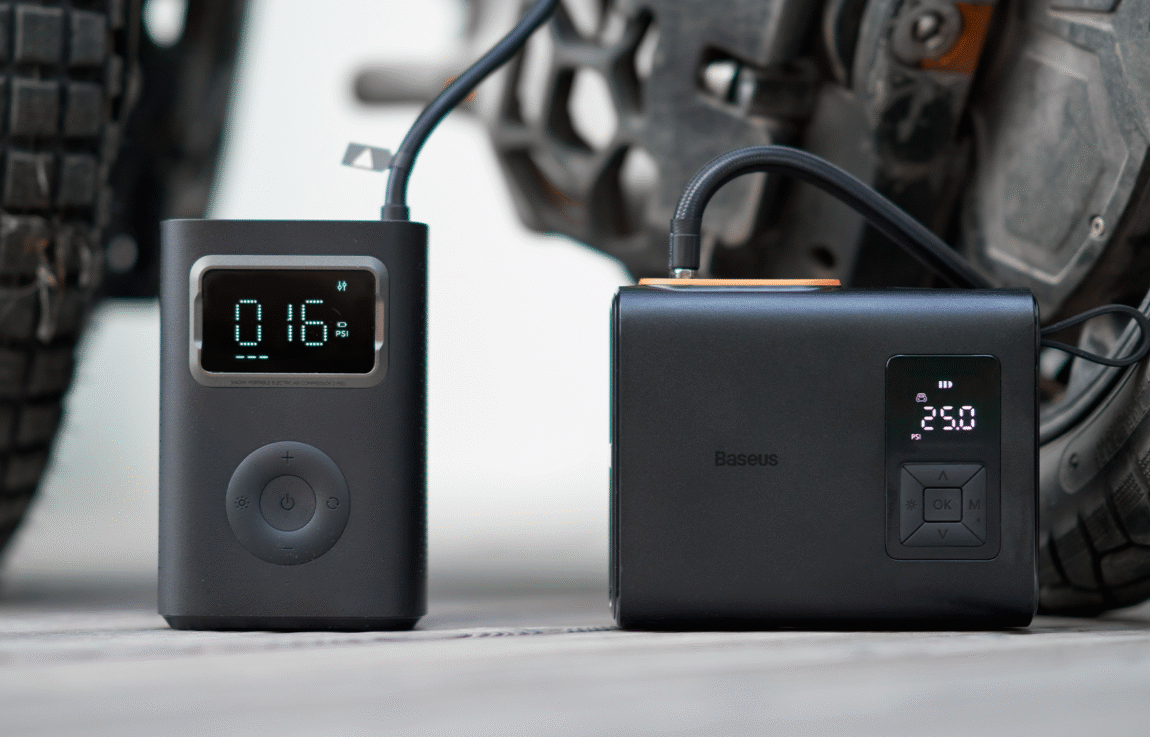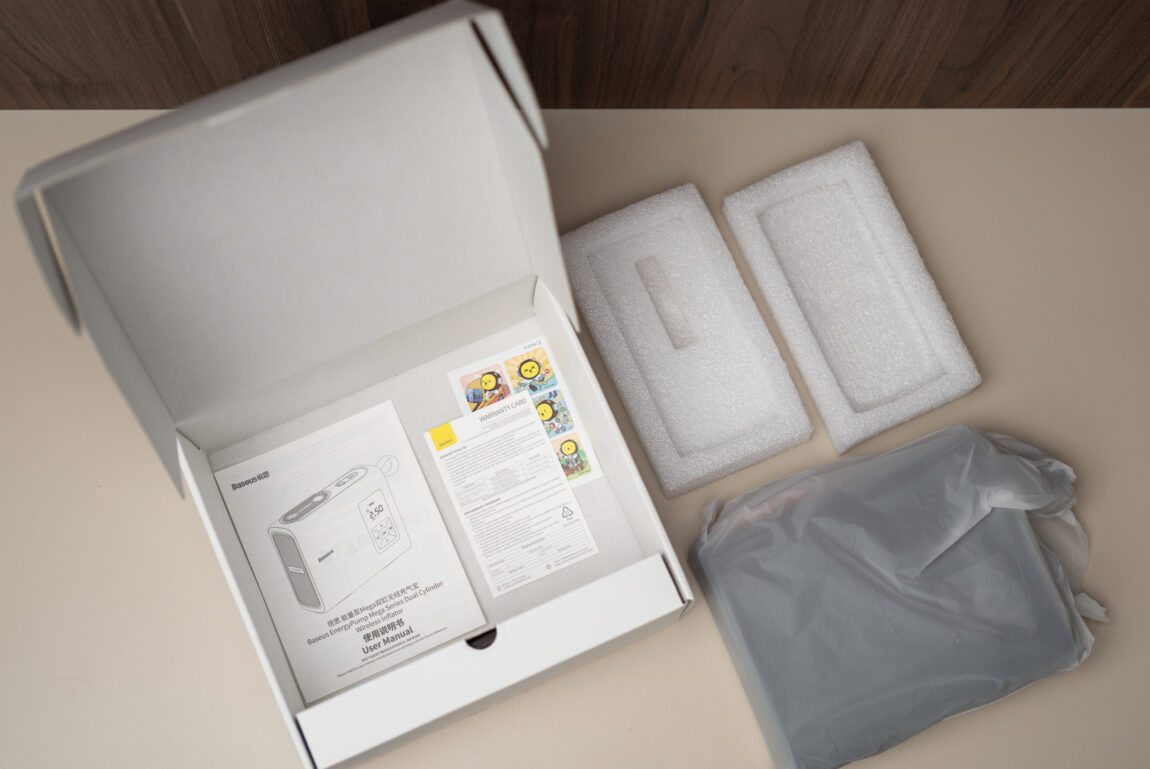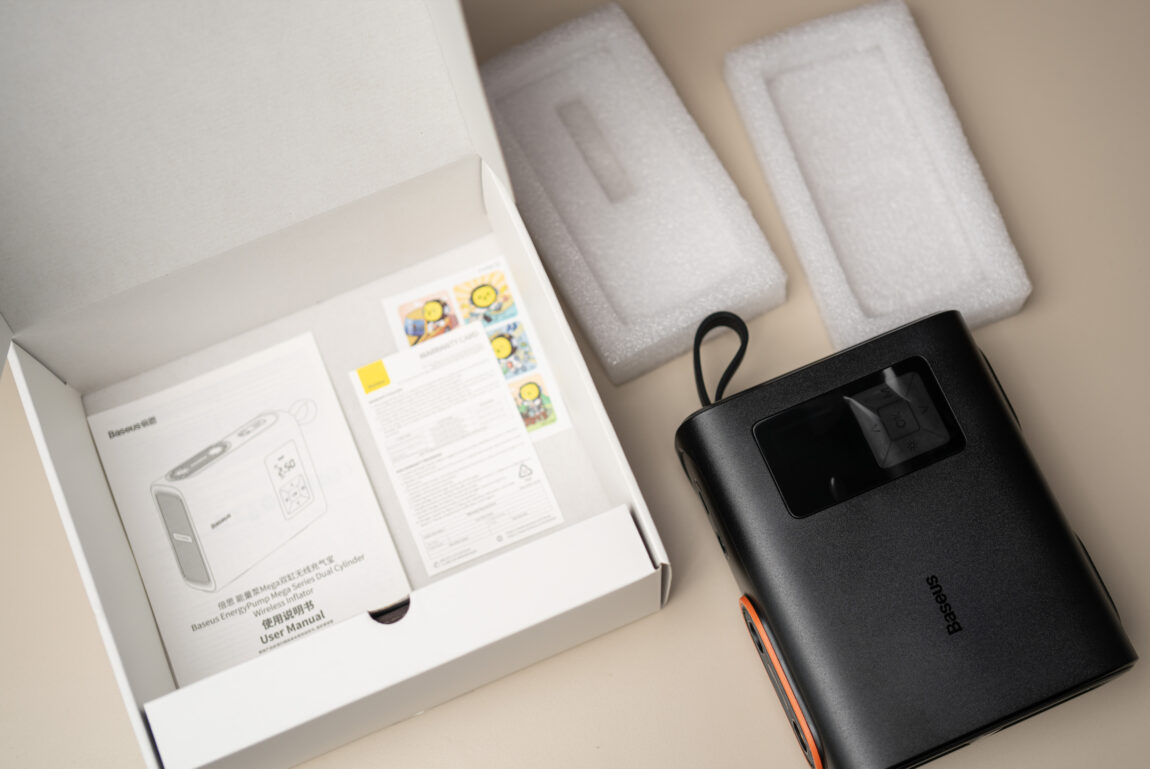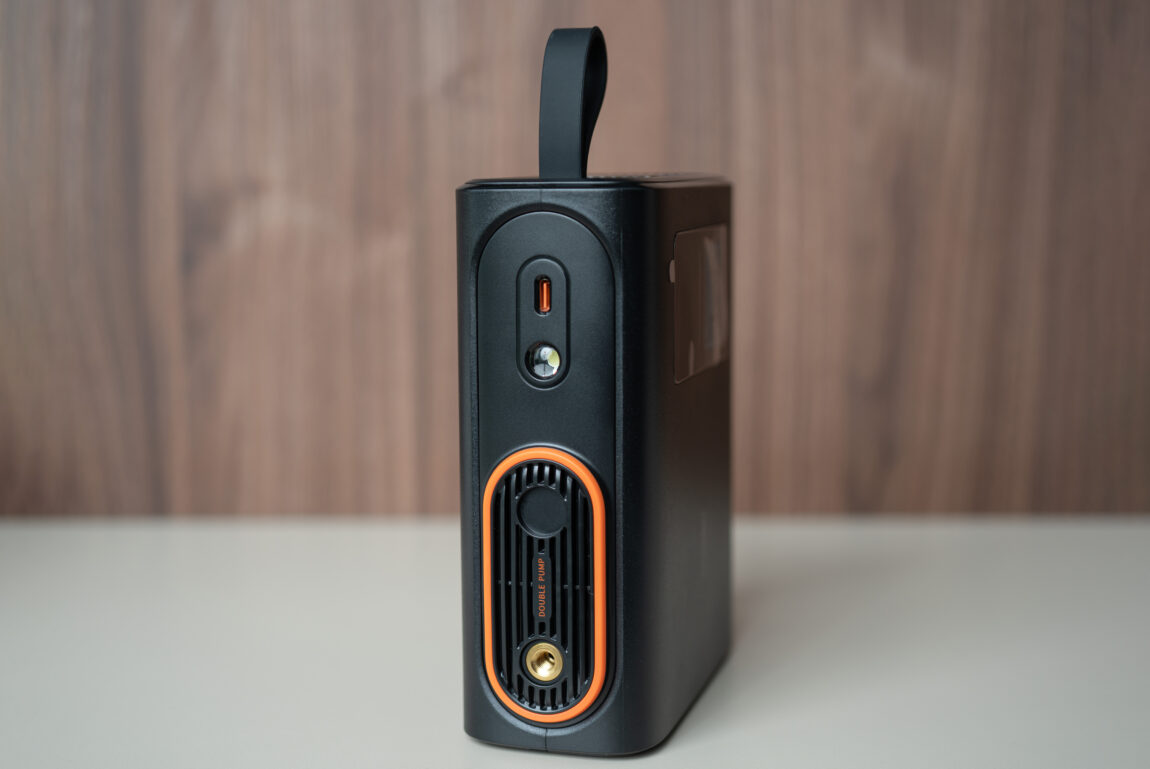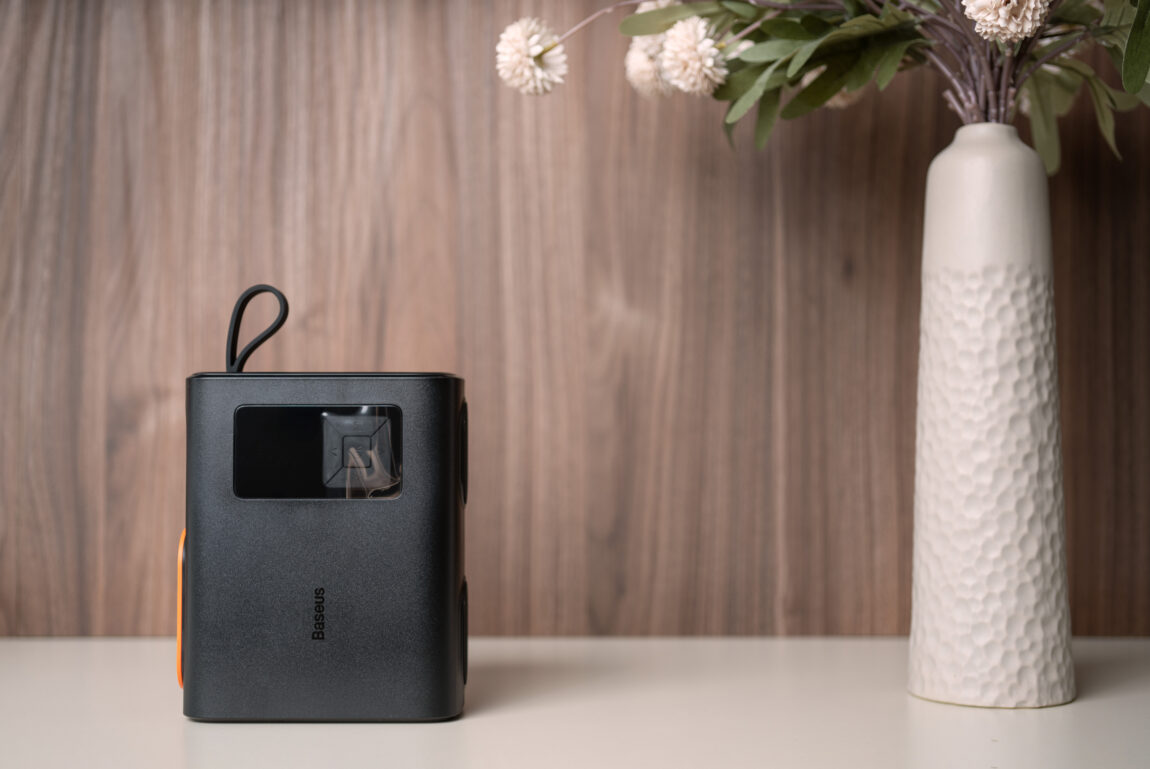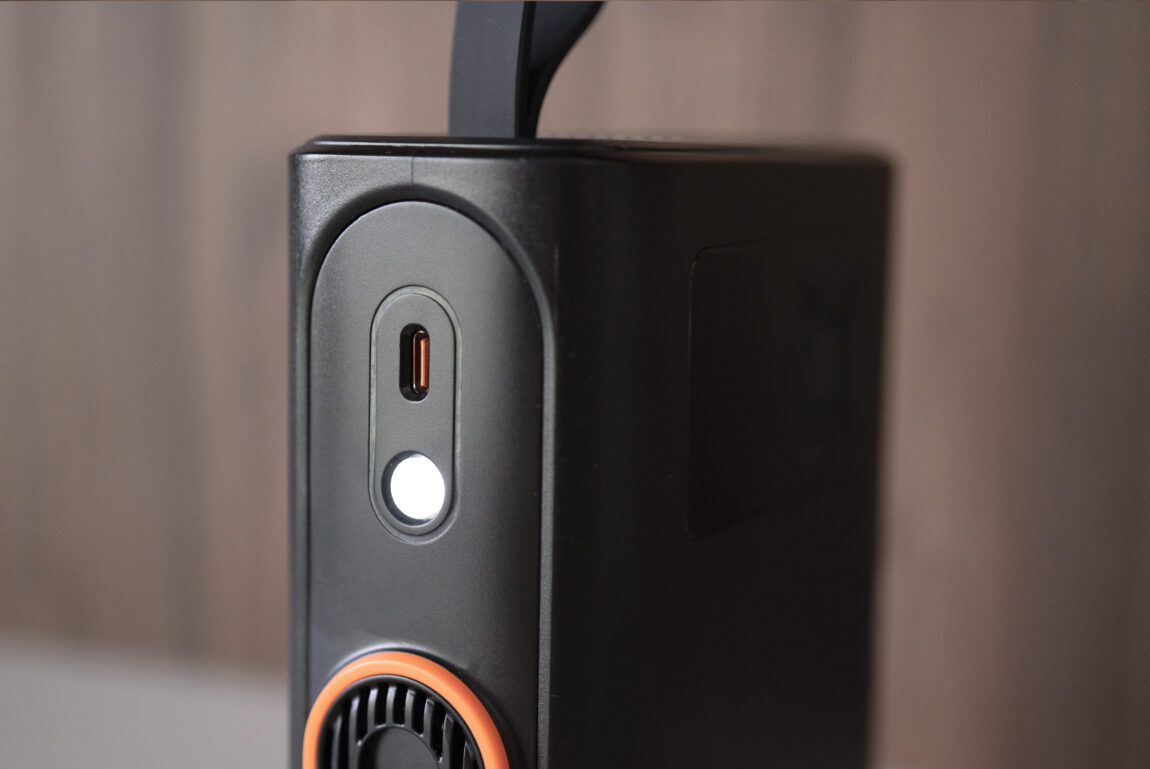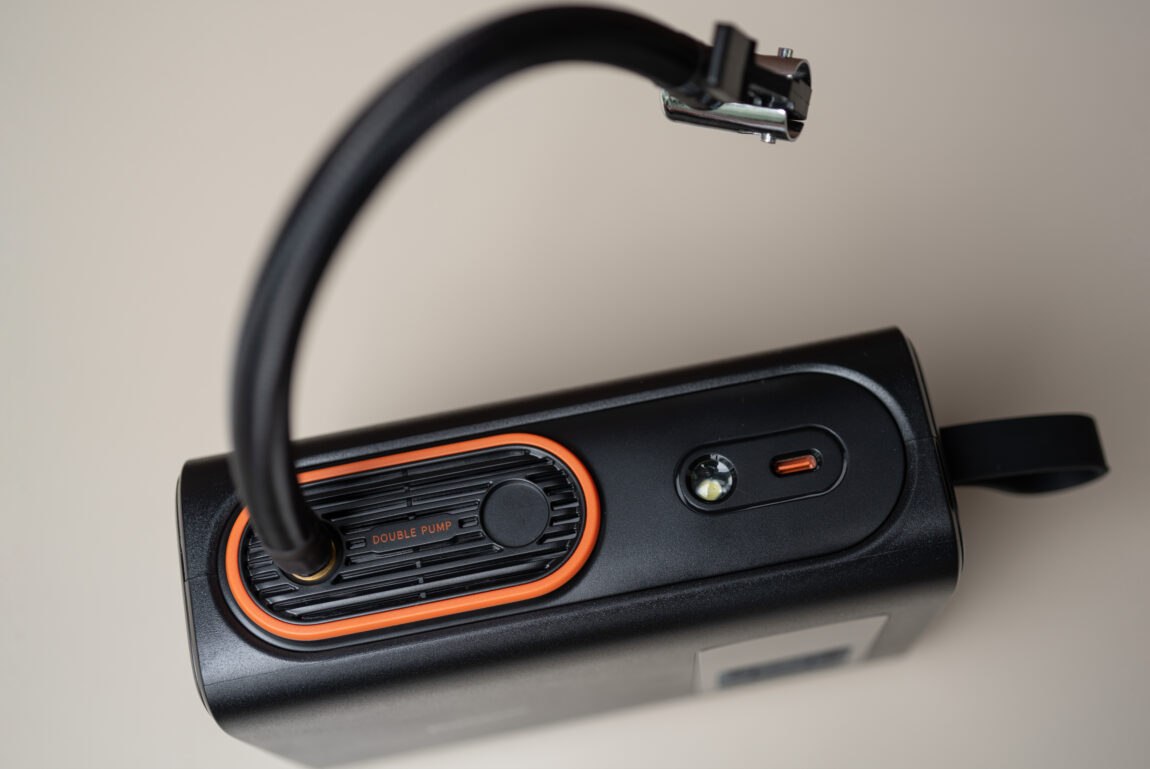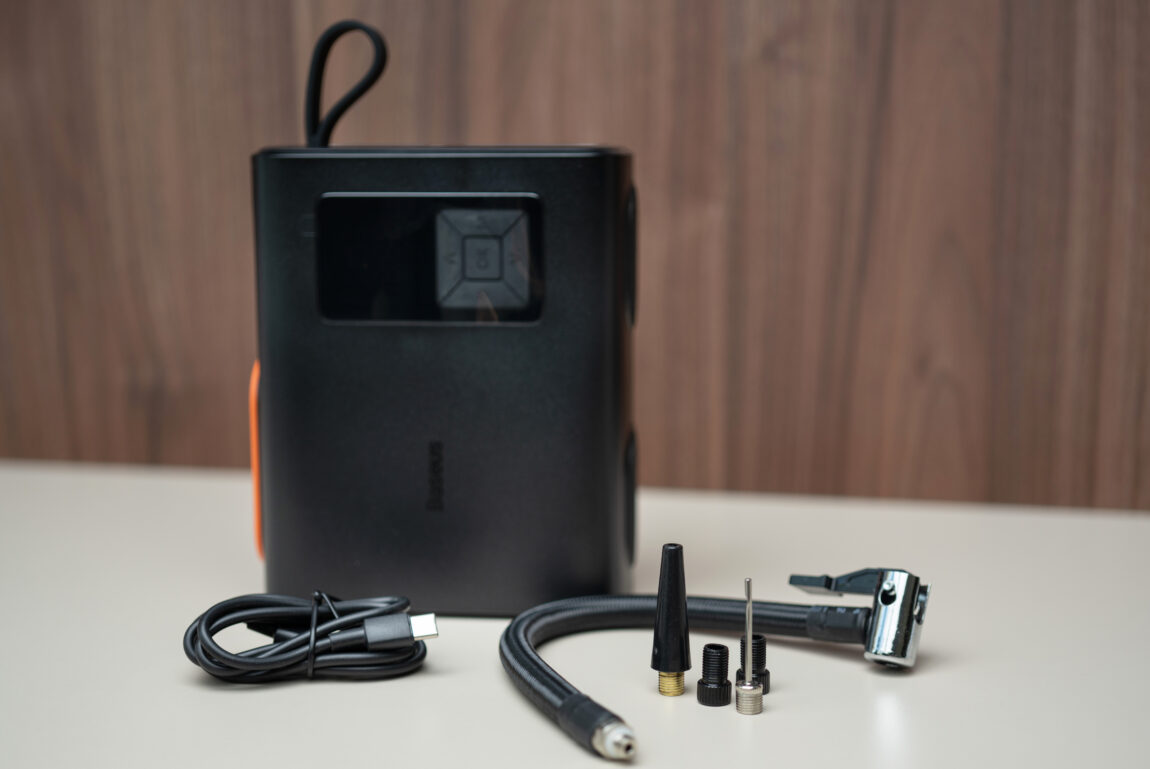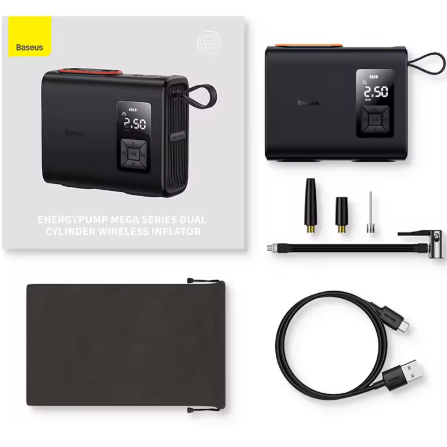A flat tire – and you’re in a hurry. There’s no spare tire or compressor in the trunk, and the nearest help is far out of town. In such cases, a wireless pump can be a real lifesaver. It’s useful not only for a car, but also for a bicycle, scooter, or even a unicycle. This time we picked up the Baseus Mega Energy Pump – a compact, powerful, and versatile pump suitable for a variety of needs.
Baseus Mega Energy Pump
Assessment:
What did we like?
What didn't we like?
But is it really worth choosing this particular pump? Or maybe the Xiaomi Air Pump 2 Pro is better? In this review, we will practically compare both models: which one inflates faster, which one is more convenient, which one has a clearer screen, and which one is actually worth your attention.
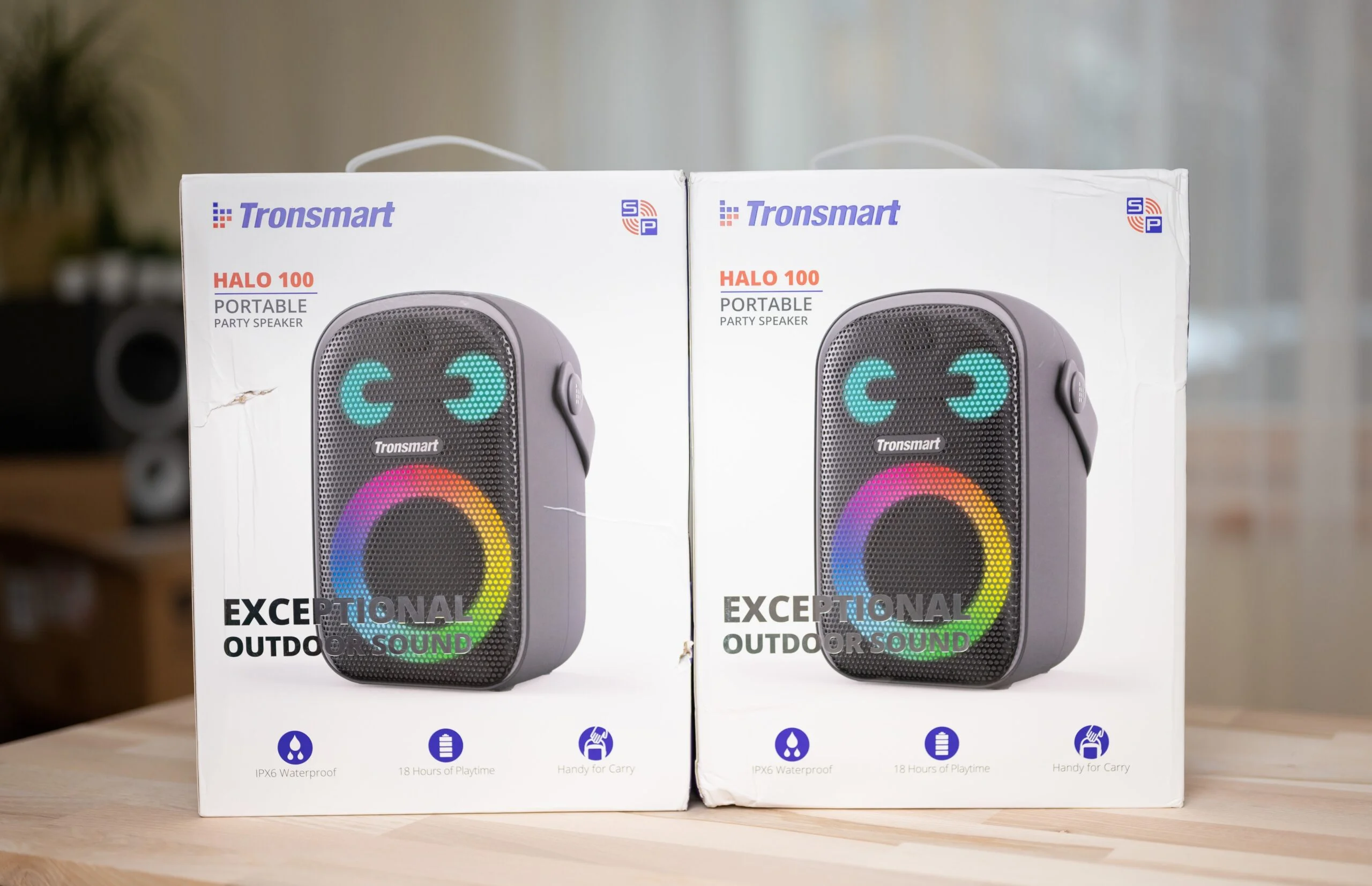
Unboxing
When unpacking the Baseus pump, the quality packaging immediately catches your eye. Everything is packed very securely - nothing is thrown around. I liked that the nozzles are placed separately in a compartment, and the pump itself is already ready for use. There is no need to collect anything extra - you just need to screw on the hose and you can already inflate the first tire.

First impressions
The pump looks modern, but at the same time very practical. It reminds me of regular car pumps – the controls are intuitive, the buttons are clear, and the body looks solid and high-quality. The plastic is not shiny, less greasy than the Xiaomi Pro 2, and it feels nice in the hands. Maybe the screen could be a little bigger, but the one that exists does its job perfectly.
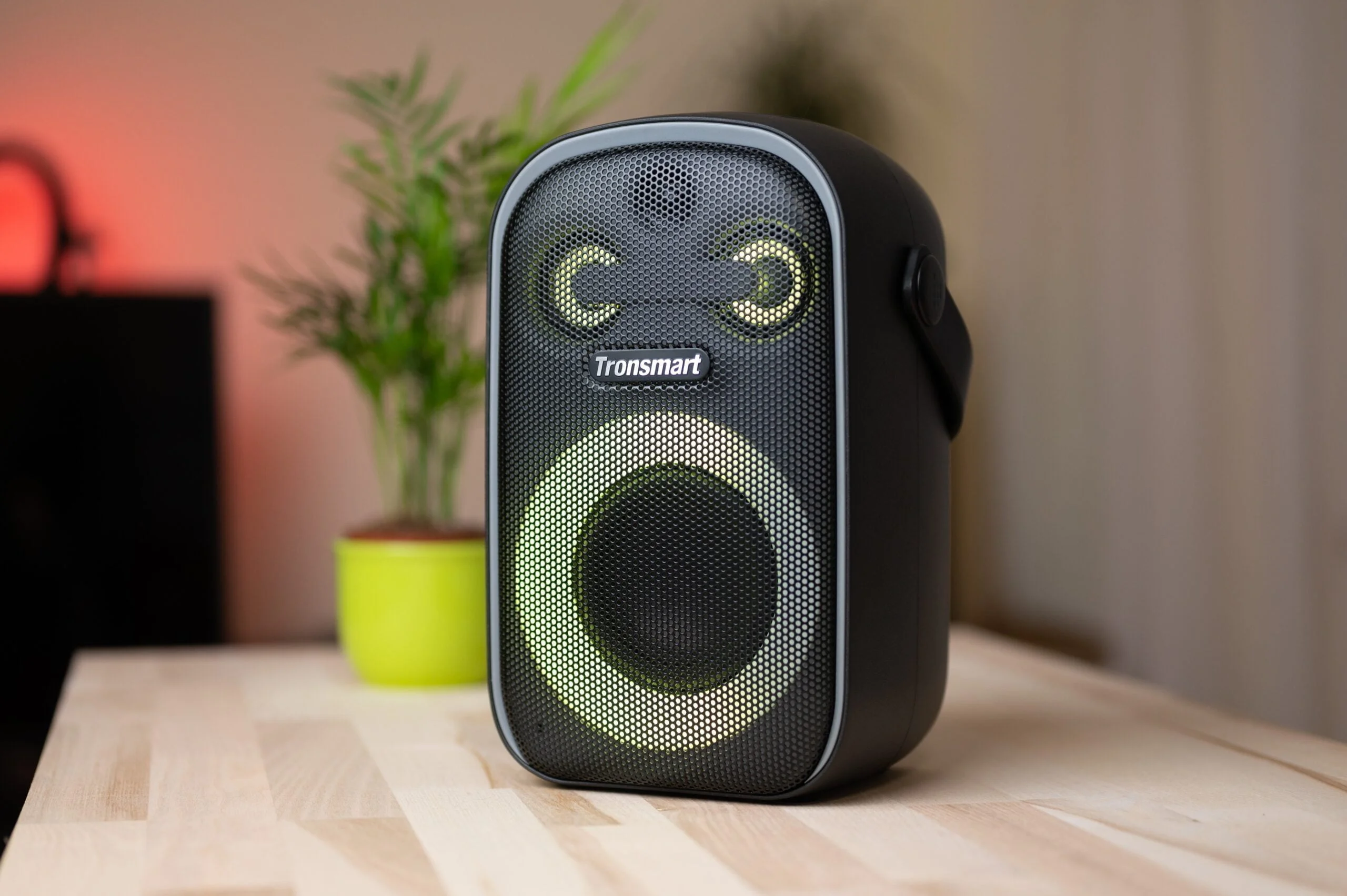
Practical test: which one blows faster?
All tires were inflated from 0 bar or almost completely empty, so these are real stress tests that allow us to assess the real-world performance of the devices. Two pumps participated in the test: Baseus Mega Energy Pump and Xiaomi Air Pump 2 Pro. The results are as follows:

Battery test: how many tires can be inflated?
Both pumps were tested with fully charged batteries. Although the Baseus Mega Energy Pump has slightly higher performance, its battery is smaller than the Xiaomi 2 Pro, so its operating time is shorter. Manufacturers' declarations are often optimistic, but these results were obtained in real conditions, recording not only the time, but also the remaining battery level after each tire inflation.

How does this compare to regular pumps?
Compared to conventional 12V compressor pumps that plug into a car's power outlet, the Baseus is definitely not far behind, and in some cases even outperforms it. Standard car pumps often inflate a R17 tire in 3-5 minutes - very similar to the Baseus result (3:04 min).
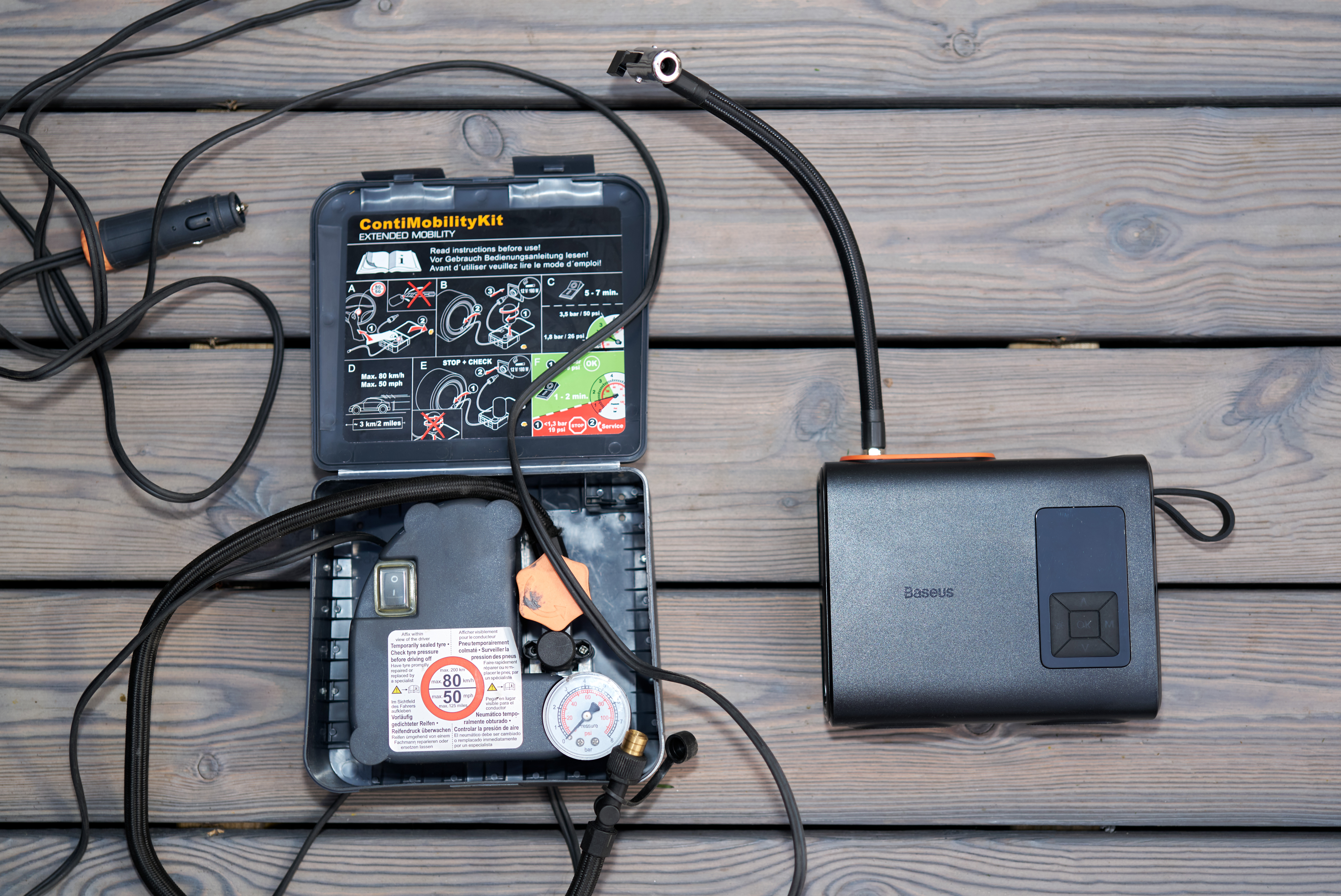
However, with wired 12V pumps, you often have to struggle: pulling out the wires, pulling them through the cabin, trying not to get them dirty, and placing them neatly. With wireless pumps like Baseus or Xiaomi, these problems simply don't arise - you just pick them up, connect them, and that's it.

What did we like?
Baseus really pleased with its compactness, weight and versatility. Suitable for both cyclists, unicycle enthusiasts and car tires. Inflates quickly, sturdy body, clear screen, intuitive controls.

I liked that it has LED lighting and USB-C charging. There is an automatic shutdown and several modes that can be easily switched. You can also manually set the desired pressure value.

What we didn't like?
Sound – although measurements show that Baseus reaches up to 115 dB, and Xiaomi – about 100 dB, in reality the difference is not very pronounced. Xiaomi sounds a little softer. Valve tip – although the design is the same as Xiaomi (fixed by folding), Baseus uses a metal tip, which is often more difficult to lock and even more difficult to remove. This is especially true for unicycles – if you need to pull or twist the lock, you can damage the valve and even tear the chamber.

Comparison with Xiaomi 2 Pro
Both Baseus and Xiaomi are excellent products that can be confidently recommended. Both are characterized by high-quality performance, convenience and versatility - for bicycles, cars or even electric unicycles.

They are very similar in purpose, but have different advantages. Baseus blows a little faster, but Xiaomi offers a larger battery capacity, a more convenient shape for holding, and a significantly brighter LED light, which is really useful in real conditions. Baseus education is more symbolic.
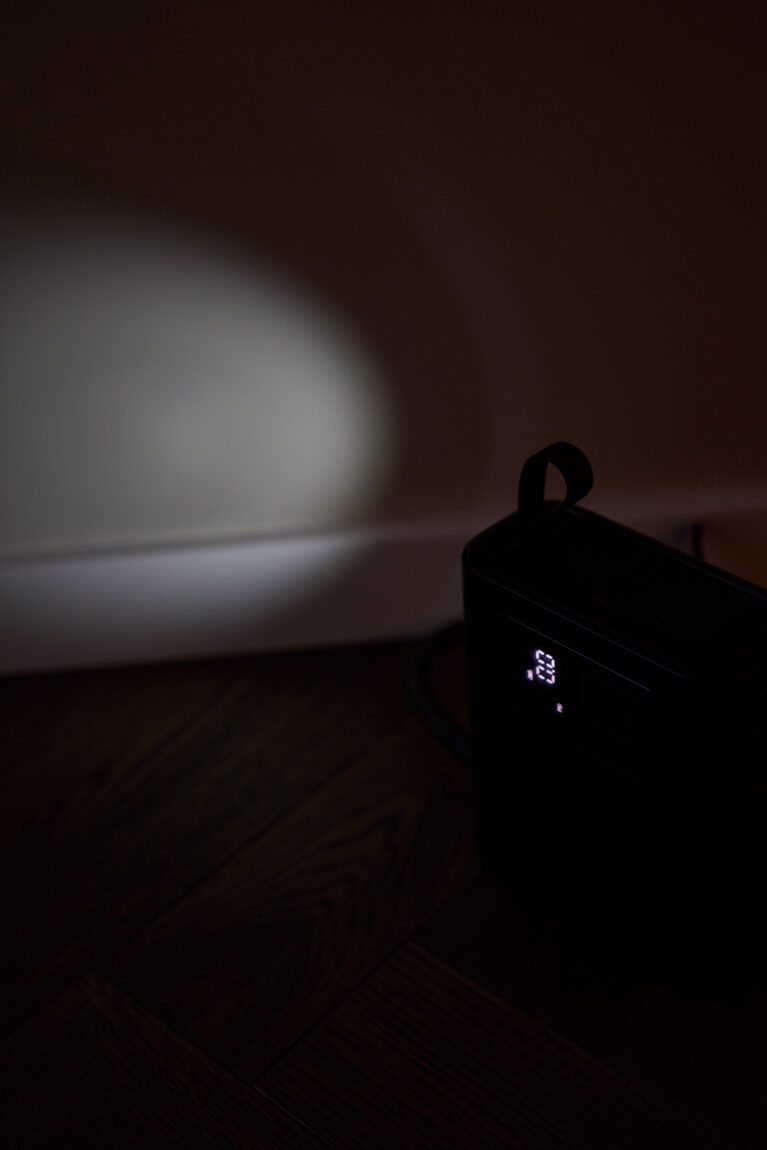
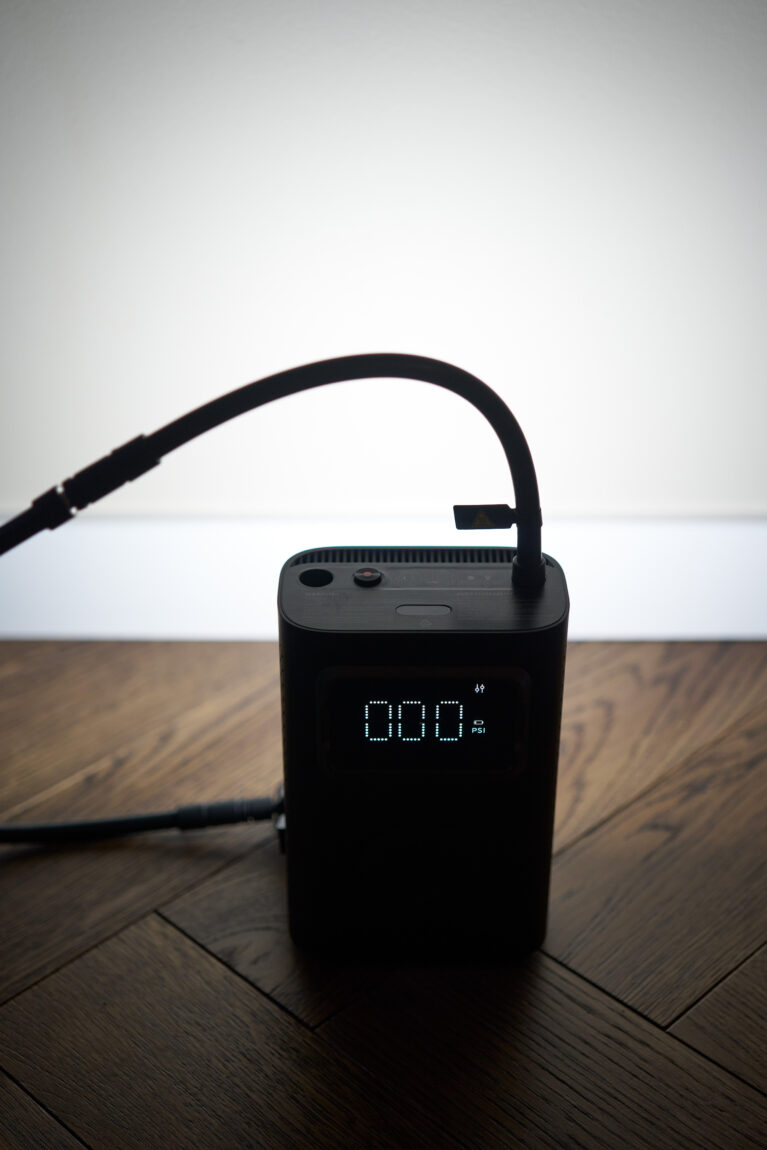
One practical downside is that the Baseus hose is much shorter than the Xiaomi. This becomes inconvenient when you need to inflate tires in hard-to-reach places or want to place the pump on the ground. The Xiaomi is much more flexible in this regard. The noise level is slightly different. The Xiaomi sounds a little softer, but both pumps work quite loudly.

Personally, I found Xiaomi to be slightly better – not in terms of performance, but in terms of overall performance: a more comfortable shape, more practical details, a longer hose, and a better user experience. However, the choice depends on your priorities – speed or endurance, ergonomics or functionality.

Verdict
The Baseus Mega Energy Pump left a really good impression. It's a great solution for a city dweller or an active leisure enthusiast who needs to quickly and conveniently inflate tires - whether it's a bicycle, unicycle, or car. It fits everywhere, works reliably, and the operation is as simple as two times two.


